 1990 Lexus LS I Dimensions, Size & Specs
1990 Lexus LS I Dimensions, Size & SpecsMeasurements of the 1990 Lexus LS I, engineered for optimal performance and comfort
| Dimensions | |
|---|---|
| Length: | 4995-5005 mm196.7-197.0 in16.4-16.4 ft |
| Width: | 1820 mm71.7 in6.0 ft |
| Height: | 1405-1425 mm55.3-56.1 in4.6-4.7 ft |
| Trunk Capacity: | 408-450 liter14.4-15.9 cu ft |
| Weight Specifications | |
| Curb Weight: | 1705-1720 kg3759-3792 lbs |
| Maximal permitted Weight: | 2185-2215 kg4817-4883 lbs |
| Tire Specifications | |
| Rims Sizes: | 15-inch rims:
|
| Tire Sizes: |
|
The Lexus LS I, produced from 1989 to 1992 and introduced as the flagship luxury sedan of Lexus, marked a significant milestone in the brand's history as their first LS model generation. This full-size sedan combines a stately presence with refined engineering, designed to compete with established European and American luxury sedans of its era. The Lexus LS I measures approximately 4,995 mm to 5,005 mm (196.7 to 197.2 inches) in length and has a width of 1,820 mm (71.7 inches), offering a spacious cabin environment optimal for comfort and executive transport. Its height varies between 1,405 mm and 1,425 mm (55.3 to 56.1 inches), contributing to a sleek, low-slung profile that enhances aerodynamic performance and road presence. Weighing between 1,705 kg and 1,720 kg (3,758 to 3,792 lbs) curb weight, the LS I maintains a solid yet refined chassis balance suitable for smooth rides and confident handling. The vehicle's maximum weight ranges from 2,185 to 2,215 kg (4,817 to 4,883 lbs), indicating its robust build with allowances for passengers and cargo. In terms of practicality, the Lexus LS I offers a luggage capacity between 408 and 450 liters (14.4 to 15.9 cubic feet), sufficient for the needs of luxury sedan users. Wheel options on the LS I include 6.5J x 15 and 7J x 16 rim sizes, fitted with tire sizes of 205/65 R15 and 225/60 R16, which reinforce the balance between ride comfort and grip. Overall, the Lexus LS I (1990) exemplifies Lexus's entrance into the luxury sedan market with dimensions and specifications that highlight spaciousness, comfort, and solid engineering.
Discover the standout features that make the 1990 Lexus LS I a leader in its class
Have a question? Please check our knowledgebase first.
The Lexus LS I, produced from 1989 to 1992, has an overall length ranging between 4995 and 5005 mm (196.7 to 197.2 inches), a width of 1820 mm (71.7 inches), and a height varying from 1405 to 1425 mm (55.3 to 56.1 inches). These measurements reflect a classic full-size luxury sedan footprint common in the early 1990s, providing an elegant and spacious presence on the road without being excessively large. The slight variation in length and height depends on specific model trims and optional equipment fitted during production.
The curb weight of the Lexus LS I ranges from 1705 to 1720 kg (3759 to 3794 lbs), placing it within the typical weight class for premium full-size sedans of its era. This weight contributes to a stable and comfortable ride, benefiting from enhanced suspension tuning to absorb road imperfections smoothly. While slightly on the heavier side due to luxury features and robust construction, the weight supports a reassuringly solid feel behind the wheel without compromising agility excessively. The balance between weight and powertrain setup ensures the LS I delivers relaxed highway cruising and composed handling suited for luxury cruising.
Yes, the Lexus LS I can fit comfortably into a standard residential garage. With a length of about 4995 to 5005 mm (roughly 16.4 feet), a width of 1820 mm (about 6 feet), and a height between 1405 and 1425 mm (approximately 4.6 to 4.7 feet), the car dimensions align well with typical North American and European garage spaces, which usually measure at least 6 meters (19.7 feet) in length and about 3 meters (9.8 feet) in width. This provides sufficient clearance on all sides for door opening and vehicle maneuvering inside standard garages, though owners should always measure their specific garage to ensure compatibility.
The Lexus LS I offers a luggage capacity ranging from 408 to 450 liters (14.4 to 15.9 cubic feet), which is generous for a luxury sedan from the early 1990s. This capacity allows for substantial storage, comfortably accommodating multiple suitcases or grocery bags. The trunk space practicality supports daily errands, business trips, and long-distance travel, ensuring owners can carry luggage and gear without compromise. The trunk layout, aided by wide-opening rear access, enhances usability, making it a convenient choice for those requiring both luxury and functional cargo space.
The Lexus LS I came equipped with tire sizes of 205/65 R15 and optional 225/60 R16, mounted on rim sizes of 6.5J x 15 and 7J x 16 respectively. The 15-inch rims with 205/65 tires provide a taller sidewall, which is beneficial for absorbing road shocks and enhancing ride comfort, delivering a smooth and cushy driving experience typical of luxury sedans. The optional 16-inch rims and wider tires improve grip and cornering stability slightly, providing a sportier feel without sacrificing much ride quality. These configurations strike a good balance between luxury ride comfort and confident handling.
The Lexus LS I was introduced as Lexus's flagship luxury sedan, effectively marking its entry into the full-size luxury segment. Compared to American and European contemporaries like the Mercedes-Benz S-Class W126 or BMW 7 Series E32, the LS I is slightly more compact in length (just under 5 meters) but maintains competitive width and height dimensions. Weighing between 1705 and 1720 kg (3759 to 3794 lbs), it is relatively lighter than some of its German rivals, contributing to a nimble yet comfortable driving experience. The LS I was praised for combining Japanese engineering precision with traditional luxury dimensions, thereby appealing to buyers looking for a reliable yet elegant sedan without excessive size.
The Lexus LS I's maximum weight ranges from 2185 to 2215 kg (4820 to 4883 lbs), which is the gross vehicle weight rating (GVWR) including the vehicle itself, passengers, cargo, and fuel. This limit ensures safe operation by preventing overloading beyond the suspension, braking, and safety system capacities. Given its curb weight of around 1705 to 1720 kg, the payload capacity (the difference between maximum and curb weight) is approximately 460 to 510 kg (1014 to 1124 lbs). This payload allows for about 4 to 5 passengers with additional luggage without exceeding safe limits, balancing comfort and safety for everyday use or long trips.
The Lexus LS I's height ranges from 1405 mm to 1425 mm (55.3 to 56.1 inches), depending on specific model variants and optional equipment such as suspension setups or roof molding. These minor differences have limited direct impact on aerodynamic performance, as the overall sleek and streamlined silhouette was designed to optimize wind resistance for improved fuel economy and reduced noise. In terms of interior headroom, the height variation does translate slightly to cabin comfort, with taller versions offering marginally more head clearance for front and rear passengers. However, both variants maintain ample headroom consistent with full-size luxury sedan standards.
Compared to its successor, the Lexus LS II (introduced in 1994), the LS I is slightly smaller in overall exterior size. The LS II grew in both length and width, enhancing rear passenger space and improving road presence. While the LS I measures about 4995-5005 mm in length, the LS II typically exceeds 5000 mm, and its width also increases beyond 1820 mm, signifying Lexus's intent to offer more spacious interiors and enhanced luxury features. Weight also increased modestly with the newer generation due to added safety and comfort equipment. Thus, the LS II represents an evolution towards a larger, more refined flagship sedan.
The 1990 Lexus LS I was a landmark luxury sedan, notable for its introduction of Japanese craftsmanship and reliability with luxury features previously dominated by European brands. It featured a well-appointed and quiet cabin, advanced engineering including smooth V8 engines, and innovative technologies such as electronic climate control and advanced suspension systems. Compared to contemporaries from Europe and the US, the LS I distinguished itself by emphasizing build quality, refinement, and reliability. Its understated but elegant design aimed to appeal to buyers seeking both performance and comfort with reduced maintenance and operational costs, which contributed to establishing Lexus as a premium luxury brand.
Discover similar sized cars.
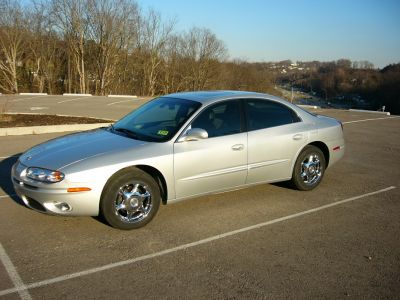
| Production: | 1999-2003 |
|---|---|
| Model Year: | 2001 |
| Length: | 5062 mm199.3 in |
| Width: | 1852 mm72.9 in |
| Height: | 1440 mm56.7 in |

| Production: | 2016-2019 |
|---|---|
| Model Year: | 2016 |
| Length: | 5066 mm199.4 in |
| Width: | 1858 mm73.1 in |
| Height: | 1470 mm57.9 in |
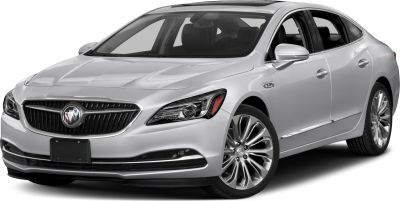
| Production: | 2019-2023 |
|---|---|
| Model Year: | 2019 |
| Length: | 5026 mm197.9 in |
| Width: | 1866 mm73.5 in |
| Height: | 1462 mm57.6 in |
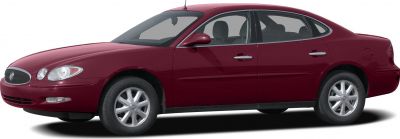
| Production: | 2008-2009 |
|---|---|
| Model Year: | 2008 |
| Length: | 5032 mm198.1 in |
| Width: | 1855 mm73.0 in |
| Height: | 1460 mm57.5 in |
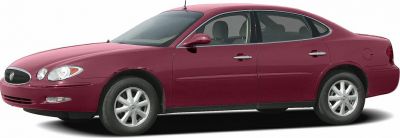
| Production: | 2004-2007 |
|---|---|
| Model Year: | 2005 |
| Length: | 5030 mm198.0 in |
| Width: | 1855 mm73.0 in |
| Height: | 1460 mm57.5 in |

| Production: | 1978-1987 |
|---|---|
| Model Year: | 1978 |
| Length: | 4978 mm196.0 in |
| Width: | 1806 mm71.1 in |
| Height: | 1407 mm55.4 in |

| Production: | 2002-2005 |
|---|---|
| Model Year: | 2003 |
| Length: | 5043 mm198.5 in |
| Width: | 2092 mm82.4 in |
| Height: | 1444 mm56.9 in |
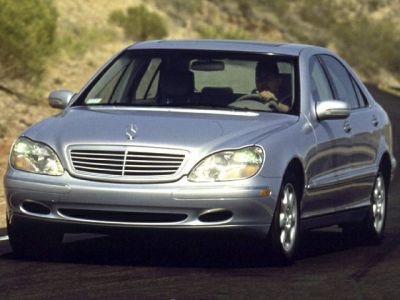
| Production: | 1998-2002 |
|---|---|
| Model Year: | 1998 |
| Length: | 5038 mm198.3 in |
| Width: | 2092 mm82.4 in |
| Height: | 1444 mm56.9 in |
